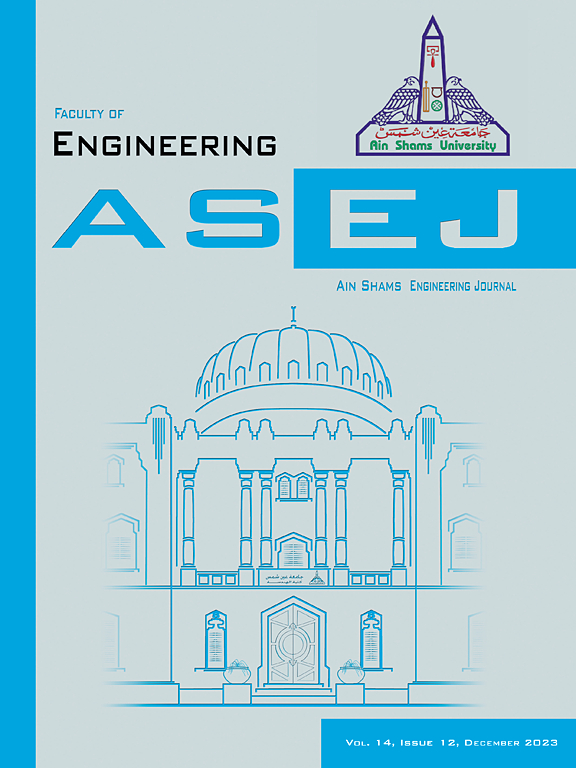Thin wire and circular disk resonator MXene solar absorber optimized using Machine learning for renewable energy applications
IF 6
2区 工程技术
Q1 ENGINEERING, MULTIDISCIPLINARY
引用次数: 0
Abstract
Investigated a range of solar absorber configurations made from different materials in an effort to maximize energy output and reduce energy losses in the context of renewable energy sources, especially solar energy. In this study, two-dimensional MXene was used as a resonator based on the Tungsten (W) substrate in thin wire and circular disk integration resonator MXene-based solar absorber (TWCDIRMSA). The design of the resonator combines a thin wire with a circular disk. The TWCDIRMSA has 90 % absorption with a 1750 nm wideband and 96 % absorption with a 930 nm wideband. The solar absorber structure analyzed AM 1.5 irradiation and 91.9 % achieved absorption. This solar absorber achieved absorption rates of 88.35 % at UV, 92.66 % at VIS, 89.56 % at NIR, 96.29 % at MIR, and 97.76 % at FIR spectra respectively. A variation in electric and magnetic intensity with colour-changing was also investigated and 94.37 % absorption by design in the 200–3000 nm wavelength region. The implementation of machine learning (ML) aims to reduce simulation time by one-fourth when compared to traditional methods while also reducing other simulation requirements, with the investigation demonstrating the ML model’s highest achieved R2 value of 0.94594 and a mean squared error of 1.294 × 10-4 under parameter variation. This proposed solar absorber polarization is insensitive to an incident angle of up to 70 degrees and a comparison with previous work is also presented in the table. With these remarkable abilities, this TWCDIRMSA has particular uses in solar inductions.
求助全文
约1分钟内获得全文
求助全文
来源期刊

Ain Shams Engineering Journal
Engineering-General Engineering
CiteScore
10.80
自引率
13.30%
发文量
441
审稿时长
49 weeks
期刊介绍:
in Shams Engineering Journal is an international journal devoted to publication of peer reviewed original high-quality research papers and review papers in both traditional topics and those of emerging science and technology. Areas of both theoretical and fundamental interest as well as those concerning industrial applications, emerging instrumental techniques and those which have some practical application to an aspect of human endeavor, such as the preservation of the environment, health, waste disposal are welcome. The overall focus is on original and rigorous scientific research results which have generic significance.
Ain Shams Engineering Journal focuses upon aspects of mechanical engineering, electrical engineering, civil engineering, chemical engineering, petroleum engineering, environmental engineering, architectural and urban planning engineering. Papers in which knowledge from other disciplines is integrated with engineering are especially welcome like nanotechnology, material sciences, and computational methods as well as applied basic sciences: engineering mathematics, physics and chemistry.
 求助内容:
求助内容: 应助结果提醒方式:
应助结果提醒方式:


